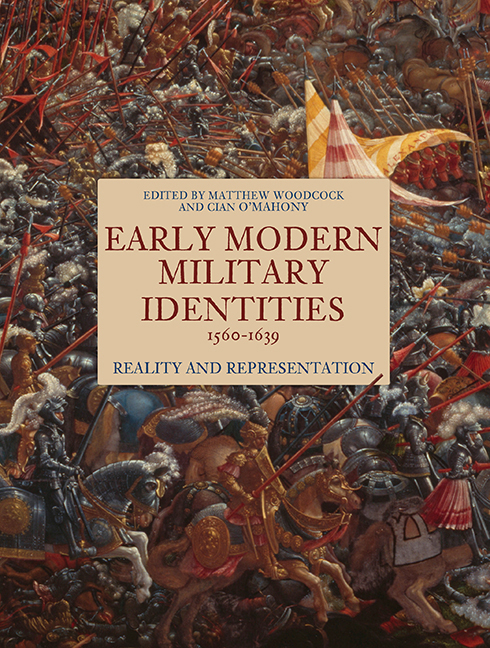Book contents
- Frontmatter
- Contents
- List of Illustrations
- List of Contributors
- Acknowledgments
- List of Abbreviations
- Introduction
- Part I Models of Military Identity
- Part II Military Identities in Early odern Ireland
- 5 The Clergy and the Military in Early Modern Ireland
- 6 ‘Trust, Desert, Power and skill to serve’: The Old English and Military Identities in Late Elizabethan Ireland
- 7 Artifice in Ormonius: Why a Renaissance Latin Epic Falsified the Military History of a Tudor Irish General
- 8 Irish Savage and English Butcher: Military Identities and Tyrone's Rebellion, 1593-1603
- 9 A print in my body of this day's service’: Finding Meaning in Wounding During and After the Nine Years War
- Part III Staging Military Identities
- Afterword: The Way Ahead
- Bibliography
- Index
5 - The Clergy and the Military in Early Modern Ireland
from Part II - Military Identities in Early odern Ireland
Published online by Cambridge University Press: 14 September 2019
- Frontmatter
- Contents
- List of Illustrations
- List of Contributors
- Acknowledgments
- List of Abbreviations
- Introduction
- Part I Models of Military Identity
- Part II Military Identities in Early odern Ireland
- 5 The Clergy and the Military in Early Modern Ireland
- 6 ‘Trust, Desert, Power and skill to serve’: The Old English and Military Identities in Late Elizabethan Ireland
- 7 Artifice in Ormonius: Why a Renaissance Latin Epic Falsified the Military History of a Tudor Irish General
- 8 Irish Savage and English Butcher: Military Identities and Tyrone's Rebellion, 1593-1603
- 9 A print in my body of this day's service’: Finding Meaning in Wounding During and After the Nine Years War
- Part III Staging Military Identities
- Afterword: The Way Ahead
- Bibliography
- Index
Summary
This chapter will explore the relationship between the clergy and the military in late sixteenth-century Ireland. Connections to religious teaching and ritual were vital for early modern armies, yet these links remain underexplored in works on military culture of the period. The Erasmian Militis Christiani tradition has often been invoked to explain Christian attitudes, particularly in studies of an assertive proselytising culture prevalent from the late Middle Ages onwards, but it is relatively infrequently applied in terms of actual military service and identity. As this chapter demonstrates, the clergy played two principal roles in martial culture: justifying military action in sermons; and accompanying armies in order to carry out the normal duties of clergymen, which included preaching to the officers and men. In return, the army provided those clergy who were prepared to serve it with ample reward.
In the first part of this chapter we will look at the careers of clergymen who served the military in Ireland and, in the second part, examine sermons delivered prior to military action. We will concentrate principally on the career of Meredith Hanmer (1544/5–1604), a chaplain to military governors in Ireland who also had a distinguished career as a translator and polemicist. Hanmer is an especially interesting case because of the wealth of information about his life that remains and, extrapolating from his example, we are able to reconstruct how clergymen behaved in times of conflict and participated in martial culture. Hanmer's career suggests that clergymen were pragmatic, prepared to adapt their service and knowledge according to the situation in which they found themselves. The second half of this chapter will concentrate on sermons, the principal extant material that enables us to reconstruct the intimate and vital relationship between clergymen and military men. We will analyse a number of military sermons, in particular, Lancelot Andrewes’ sermon preached before Robert Devereux, second earl of Essex's expedition to Ireland in 1599. We will look at the rhetoric Andrewes employed, including his adoption of the tradition of the Militis Christiani, as well as his warning to his congregation that there had to be a clear distinction between true Christians and those in thrall to Satan.
- Type
- Chapter
- Information
- Early Modern Military Identities, 1560–1639Reality and Representation, pp. 121 - 137Publisher: Boydell & BrewerPrint publication year: 2019

